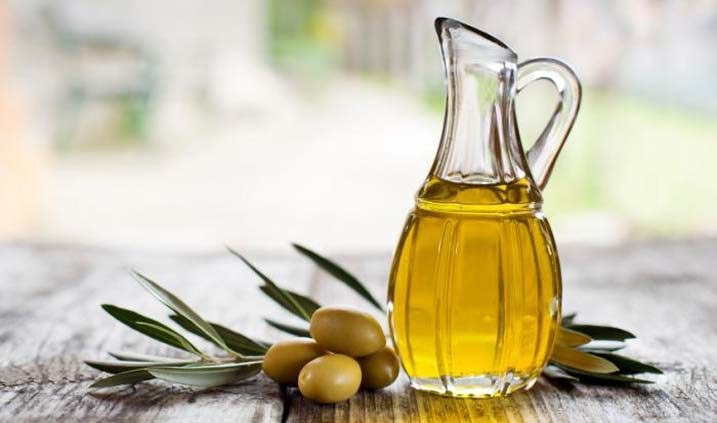Olive oil composition
Extra virgin Olive oil, as it is produced at low temperatures and without chemicals, has a wealth of components that are very beneficial to health. It is an oil with unique characteristics that make it the healthiest of all. In addition, it contains components that are very beneficial for health. Olive oil composition of a unique oil that we are going to see below.
Index:
|
Summary: Extra virgin olive oil is a food rich in nutrients. It has a majority composition of fatty acids and a minority composition of minor components. Likewise, in our shop in Las Rozas de Madrid you will find the best selection of extra virgin olive oils. From the best production areas: Baena, Jaén, Sierra Magina, Sierra de Cazorla, Oro Bailen, Priego de Córdoba, Montes de Toledo, Valencia, etc.
Related articles: Where to buy extra virgin olive oil?
1. Extra virgin olive oil composition
First of all, extra virgin olive oil is mainly made up of triglycerides. Then, there are an infinite number of compounds that provide great benefits to extra virgin olive oil. These are the components that we will look at in more detail.
The components of the oil can be divided into two main groups:
- Saponifiable fraction: this group includes the triglycerides that constitute between 98 and 99 % of the total oil and a very small portion of fatty acids.
- Unsaponifiable fraction: This includes all the minor components that make up between 1.5 and 0.5 % of the total olive oil. Despite being a very low fraction, they are of great importance. These compounds give the oil great stability, increasing its life, flavour, aroma and nutritional properties.
a) Fatty acids:
The composition of fatty acids in each extra virgin olive oil varies depending on:
- soil conditions
- climate
- variety of olive tree.
However, oleic fatty acid is found in majority proportions in all of them. Oleic fatty acid is a monounsaturated fatty acid.
b) Triglycerides:
Triglycerides form the major part of the saponifiable fraction, thus giving the oil its physical constitution.
This triglycerides are esters bound to glycerol, giving rise to glycerides (mono-, di- and triglycerides) and phosphatides. Esters attached to fatty alcohols of linear (waxes) or terpenic structure may also be found.
1.1 Minor components:
These non-glyceride fraction components constitute between 1.5 and 0.5 % of the total of extra virgin olive oil. Components with a complex nature and unique to olive oil, which have extraordinary organoleptic and nutritional properties.
Some of them are only found in extra virgin olive oils, and are more abundant the fresher the oil and the higher the quality. On the other hand, refining processes or oxidation itself eliminates or reduces the content of these components.
Among the most important minor components, we highlight the following:
a) Hydrocarbons:
These make up between 30 and 50 % of the unsaponifiable fraction. The two main hydrocarbons found in olive oil are squalene and α-carotene. Squalene acts as a biochemical precursor in liposynthesis of sterol. To a lesser extent, we also find β-carotene, which acts as a precursor of vitamin A.
b) Triterpenic alcohols:
The main triterpenic alcohols found in olive oil are: erythrodiol and uvaol. These compounds are very important for detecting fraud in the oil when pomace oils are added.
Another important alcohol is cycloartenol, which is very interesting from a nutritional point of view as it helps to lower cholesterol levels.
c) Sterols:
These are components that make it possible to demonstrate the authenticity of an extra virgin olive oil. The sterol β-sitosterol usually constitutes more than 90 % of the total sterols and the Δ7 -stigmastenol is usually less than 0.5 % of the total sterols.
The compound β-sitosterol is a very beneficial component for the body, because it blocks the body’s absorption of cholesterol, thus helping us to control our blood cholesterol levels.

olive oil composition
Diagram 1: Extra virgin olive oil composition
d) Tocopherols:
The following tocopherols stand out: α-tocopherol or vitamin E, very interesting compounds for their great antioxidant power, due to the fact that they reduce the risk of suffering degenerative and cardiovascular diseases.
e) Polyphenols:
These are compounds of a very complicated chemical nature, soluble in aqueous media that provide great stability to the oil, aroma, flavour and colour.
Among them we can highlight tyrosol and hydroxytyrosol from the hydrolysis of oleoyeurpein. This compound is typical of olives and gives EVOO its typical bitterness. In the oil we also have benzoic acid and cinnamic acid, compounds that give a ripe fruit flavour to the oils.
f) Volatile and aromatic compounds:
These are compounds of a very different nature that give olive oil its fragrance and flavour. Compounds such as: hydrocarbons, phenols, ketones, esters, terpenes, alcohols, aldehydes… Their quantity and composition vary in each oil according to its freshness and quality, variety and the soil and climatic conditions of the olive tree.
g) Pigments:
Compounds that give colour to the oil, among them we find: chlorophylls, pheophytins and carotenoids.
1.2. Oleocanthal:
Oleocanthal, one of the most recognised compounds in extra virgin olive oil, was discovered by Gary Beauchamp during an experiment to improve the taste of ibuprofen.
While a team of scientists, nutritionists and chefs were conducting a molecular study with gourmet foods, Beauchamp was simultaneously tasting olive oil when he discovered strong similarities between the taste of a particular olive oil and ibuprofen.
a) Anti-inflammatory properties according to several studies
Numerous researchers have established that oleocanthal has a strong ability to provide potent anti-inflammatory properties, which inhibits the enzyme cyclooxygenase, in the same way as ibuprofen. Other studies have shown that extra virgin olive oil will help in the chemoprotection of brain cancer, the reduction of invasive breast cancer development, the reduction of breast cancer relapse, and will play an important role in the treatment of bladder cancer.
In addition, according to a new study published in the scientific journal Nutrition and Cancer, it should be investigated whether oleocanthal could also provide anti-proliferative activity against melanoma cells.
The new study investigated the effect of a pure, direct and purified extraction of oleocanthal on melanoma cells and their activity. In addition, human melanoma cells with high tumour activity and metastasis were compared with dermal fibroblasts (normal skin cells in the human body).
b) Helps fight skin cancer
For the first time, the study revealed that oleocanthal inhibits the growth of melanoma cells in a concentration-dependent manner, i.e. the more cells are exposed to oleocanthal, the less they proliferate and cause cancer. The same result did not occur with dermal fibroblasts. These results suggest that oleocanthal has a selective activity on cancer cells.
However, further studies should be carried out to confirm whether the polyphenols in extra virgin olive oil will, in fact, be a pharmaceutical agent that could be used for the treatment of melanoma.

Picture 1: Sunflower field
2. Composition of other oils: sunflower, palm, coconut
The great difference between extra virgin olive oil and other oils is that extra virgin olive oil has been extracted by physical methods at low temperatures and without any chemical process. This confers to this fat that does not lose any property of its natural fruit, the olive. From other fats such as sunflower, which is also very healthy, or palm and coconut oils, its oil is extracted by high temperature methods and using chemical methods. After these so-called refining methods, the oil loses most of its minor components and beneficial properties.
The composition of sunflower oil is mainly made up of polyunsaturated fatty acids. Coconut and palm oils, by saturated fatty acids.
3. Nutritional composition of olive oil
Olive oil is a fat, and it is essential that we incorporate it into our diet, not only because of its great benefits for the heart and degenerative diseases such as cancer. Olive oil is a vehicle for the transmission of fat-soluble vitamins, which we can only ingest if we take a fat
In short, the olive oil composition makes it unique. Thanks to this type of fat, extra virgin olive oil is the healthiest fat.
Sources:
Revista especializada en aceite de oliva “Olive Oil Times: https://www.oliveoiltimes.com/ Olive oil composition
Organismo oficial por la lucha contra el cáncer:
Página web de la Sociedad Española de Oncología Médica:







Leave a Reply
Want to join the discussion?Feel free to contribute!